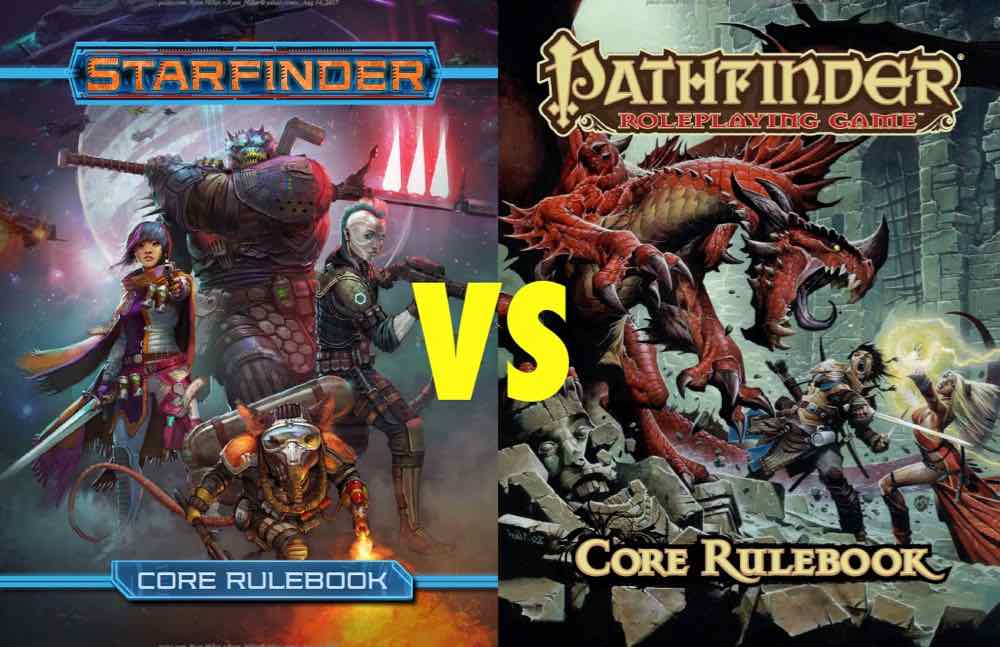In late 2020, 10 Speed Press released Heroes’ Feast (HF), a recipe book highlighting (and in some cases reviving) recipes from the last 50 years of D&D. In autumn of 2023, they released Heroes’ Feast: Flavors of the Multiverse (FotM), which brings a new selection of recipes from the many realms of D&D. Whether it’s classic recipes like Otik’s Skillet-Fried Spiced Potatoes which originally appeared in Leaves from the Inn of the Last Home in 1987, or all-new recipes inspired by the worlds of Dungeons and Dragons, there’s a little bit of something for everyone. Some recipes are extremely simple, using store-bought elements to save time and energy. Other recipes require obscure ingredients to make, and are completely made from scratch. Let’s look at some of the recipes and get a sense of who might like these books, and whether they’re a value.
Disclaimer: Sample copies were provided for review purposes.
Are the Recipes Any Good?
The first question I set myself to answer is to decide whether the recipes are worth making. In the end, I found them to be on par with the average cookbook available at bookstores. There are easy recipes that tend to be less impressive flavor-wise, and there are more difficult recipes which tend to have better flavors. The recipes are easy to read and follow, though some of the preparation happens beforehand. For example, potatoes are often assumed to be prepared when you start in the recipe text. The ingredient list might instruct you on how to prepare the potatoes, but sticking that instruction there means that if you’re reading the instructions for an idea of how long it takes to make a meal, you absolutely need to consider how long it will take to prepare the ingredients as well.
In order to more thoroughly review the recipes, I took the time to make a few. I’ll be reviewing these individual recipes to give you an idea of what the books are like overall. The recipes I made include Otik’s Skillet-Fried Potatoes (HF p. 29), Bangers and Smash (HF p. 89), Stuffed Egg-Battered Toast (HF p. 120), and Barovian Garlic Knots (FotM p. 134).
Otik’s Skillet-Fried Potatoes (HF p. 29)

Otik’s Skillet-Fried Potatoes was a surprisingly simple recipe, and makes for a very flavorful dish. I will say that this recipe needs a heat warning, as an entire teaspoon of cayenne pepper makes for a very spicy dish. I mixed all of the spices together (black pepper, sweet paprika, cayenne, and garlic powder) and applied only half to the dish. I put the rest on the table as I served the potatoes, and I was the only person at the table to add more spice to their dish. The texture of the potatoes was spot-on, and it took significantly less time to cook them than my normal method, thanks to some judicious microwaving the potatoes before skillet-grilling them. Of all of the modifications to a classic dish I came across, microwaving potatoes before frying them is my favorite, and one I will use for a long time.
Bangers and Smash (HF p. 89)

This “Dwarven” recipe for smashed potatoes and sausage was solid, but I made some substitutions. I skipped the tomatoes entirely, as only some people in my house would have eaten them, and I had to substitute carrots for the leeks due to availability of ingredients. Finally, I accidentally substituted small Yukon gold potatoes for the creamer potatoes, as I misread the ingredients list. All of that said, the method works, even if you have to substitute ingredients, and we were left with a delicious meal of potatoes, carrots, and sausage. I think that leeks, as called for in the recipe, would have been a better choice, so I’m hoping to try this dish again once I have the opportunity.
Stuffed Egg-Battered Toast (HF p. 120)

This “Halfling” recipe tries to be an elevated French toast dish, but failed on a couple of fronts. One uses extra-thick slices of bread, cutting a pocket to stuff a mixture inside before cooking. I used some homemade challah, as the recipe calls for either challah or brioche. The challah was sturdy enough to house the filling and hold together through the cooking process.
This recipe calls for a batter of milk, egg, and salt. The lack of spices or essence in the batter means the dish tastes more egg-like than well-made French toast should. I would add some almond essence or cinnamon next time. (Personal tip: when making French toast, pulse the egg mixture through a bullet blender to break up any large egg structures to avoid deposits of egg forming on the outside of your slices of toast.)
The filling was mascarpone, vanilla, and walnuts. On the page, this sounded appealing, but walnuts are so bitter, and mascarpone so mild, that you end up not tasting the cheese at all. In future, I will skip the walnuts, and add a small amount of powdered sugar to the mixture to help the mascarpone flavor compete with the syrup without detracting from the overall flavor.
Barovian Garlic Knots (FotM p. 134)

This recipe drew my attention quickly due to its use of pizza dough. Not only is pizza dough relatively easy to get at the store, it is also extremely easy to make. Ultimately, because the bread is pre-made, this ends up being a recipe for garlic butter, and a method for tying and baking garlic knots. Fear not! I used my trusted pizza dough recipe, and it worked perfectly. It’s included below. Overall, the recipe is a solid one, and it allows for fresh bread for a dish or event without having to mess with waiting for yeast to bloom or rise times if time is a factor.
GeekDad Rory’s Pizza Dough
1 tablespoon yeast
1/8 teaspoon sugar
1/2 cup water (100 – 105 degrees)
3/4 cup milk
2 tablespoons olive oil
3 cups flour
1 teaspoon salt
Combine all ingredients in a bowl. Once homogeneous, dust counter with flour and knead/fold until the dough is smooth, 1 to 2 minutes. Dough can be stored in the refrigerator overnight, but bring to room temperature before cooking. No rise time! If you have room-temperature dough in a warm environment, it will start to rise and make the dough chewier. It’s best to chill or cook right away.
Ease of Use
My single explicit criticism of these two cookbooks is the lack of a comprehensive table of contents. In many cookbooks, it works to separate the recipes into categories, such as Italian, Desserts, Beverages, or Bread. But when every recipe is assigned a fantasy species or plane of existence, the recipes need to be more easily located. The table of contents for Heroes’ Feast lists fantasy species such as Halfling or Elven, prompting you to turn to the relevant section to see the recipes in that category. But the foods in each species’ category are somewhat arbitrarily assigned. For example, there’s no immediate logic to tell a user that Dark Molasses Nutbread is Human, and Cherrybread is Elven. It is just very difficult to navigate, and that’s all just in the first book. It is so much worse when it’s organized by plane of existence in the second book.
A Note on Alcohol
Many recipes call for very small amounts of specialized alcoholic products, including absinthe, creme de mure, and kirsch. Some recipes can tolerate substitutions well, while others require the alcohol in question to provide a vital flavor or chemistry to the dish, sauce, or beverage. If you live in an alcohol-free home, most recipes are still able to be made, but some, such as the Halfling Cuisine Community Cheeses, require large amounts of wine along with the small amounts of kirsch in order to effectively create the dish. Use your best judgment when substituting these ingredients, and make generous use of online resources if there’s a question about whether a dish requires that particular ingredient. When substituting at home, consider the amount of liquid, acid, and sugar present in the ingredient you are leaving out for the best chance of making a successful dish.
TL;DR:
Heroes’ Feast and Heroes’ Feast: Flavors of the Multiverse are each creative and interesting cookbooks which feature recipes that can be considered exceptional or disappointing, but my overall impression leans toward the title of exceptional. In any given recipe, there are the bones for a fantastic dish, even if you need to make changes or substitutions for any reason. None of the dishes I have cooked failed, and I am confident the methodology for each recipe works, even if I would prefer a slightly different balance of flavors or ingredients. You can buy both books on Amazon or your local bookstore today.




